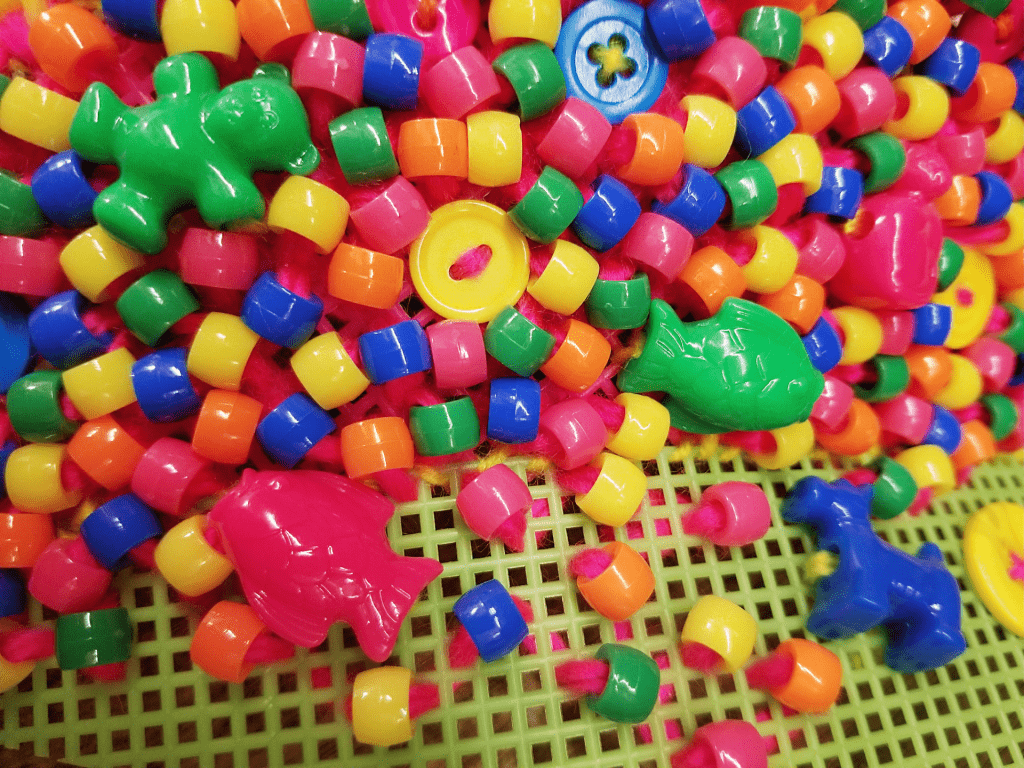Rave Kandi
Brightly colored plastic pony beads are used in the creation of “Kandi“, bracelets made and given to others in the rave community. These bracelets are traded as gifts at the discretion of the maker, and usually have a handshake involved symbols of the PLUR ethos underpinning the rave community: Peace, Love, Unity, and Respect. My first elaborate piece of kandi gifted to me was at my first rave, and I recall being stunned as I had only a single strand to trade, and it felt flimsy and unequal at best. I protested, thinking my trade wasn’t “worth” the same, to which the person responded “It’s ok! I love all kandi!” She then proceeded to tell me about attending her first rave and being gifted a more elaborate kandi cuff (similar to my trade with her) and that it meant so much to her to be given such a piece that she continued the practice herself. I was so touched by her gift and the story that I made my own more elaborate cuffs (see below, right image) to trade with others. At my last event, I was delighted to find myself in the position of gifting a piece to a person at her first rave, hearing echoes of my own exchange. Whether simple or elaborate, kandi is usually made of plastic, brightly colored beads on stretch cording. Some are embellished with perler bead decorations, toys, flowers, and more.


Kandi was the influence for a costume made for a friend attending a music festival a few years ago, comprised of an embellished bra, skirt, shorts, and embellished epaulets. The technique used on the epaulets was reprised in the look of the Candy mask, trimmed with 4-strand round braid cording made from spandex fabric, strips cut from tee shirts, and cotton lacing.


Mask Composition
The mask was built on plastic canvas in neon green, hot pink, and turquoise. The embellishment of the canvas is a multi-stage process: buttons were attached first, followed by neon animal beads. These items are the largest in size, and were laid first to gauge the rest of the materials. Negative space was filled in with neon plastic pony beads, the same type used in making kandi bracelets. The final addition was neon yellow eyelash yarn stitched in between all of the beads. The texture of the eyelash yarn fills in the spaces between the beads, but must be treated after application. To do so, the yarn is stitched through the plastic canvas, which traps the eyelash yarn fibers that must then be picked free. This creates a fluffy texture that is trimmed down. After these steps, 4-strand round braids were used to finish the edges of the mask and the eye openings. An interesting byproduct of stitching on the beads and eyelash yarn is that it adds stability and body to the mask structure, boosting rigidity and making the mask more sturdy.





This project is funded in part by the Cornell Council for the Arts. 

Leave a comment